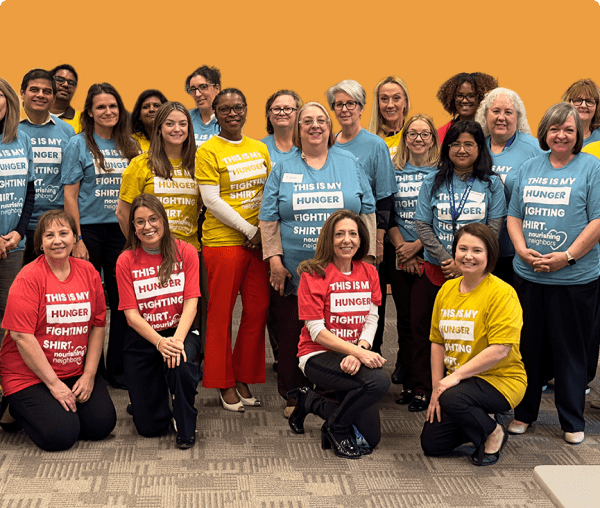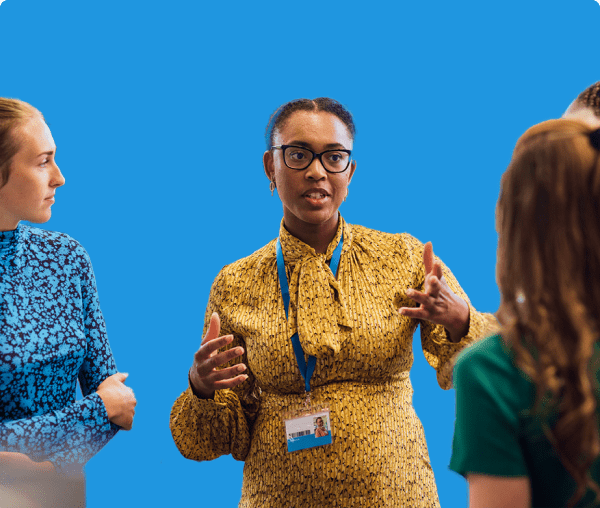How can grantmakers facilitate connections and collaboration?
 Gohar Chichian
·
5 minute read
Gohar Chichian
·
5 minute read

Trust-based philanthropy
Trust-based philanthropy is a shift in the grantmaking process. It involves granting organizations the freedom to allocate resources as they see fit, trusting their expertise and understanding of their own needs. This approach is based on the belief that those closest to the problem are also closest to the solution.
- Unrestricted funding: By providing unrestricted funding, grantmakers empower nonprofits to use resources where they are most needed. This flexibility allows organizations to address immediate needs, invest in long-term strategies, and innovate without the constraints of narrowly defined grant terms.
- Simplified application processes: Streamlining the application and reporting processes can reduce the administrative burden on nonprofits, allowing them to focus more on their mission and less on paperwork. This builds trust and shows respect for the nonprofit's time and expertise.
- Long-term partnerships: Building long-term relationships rather than short-term transactions fosters deeper collaboration. Trust-based partnerships encourage open communication, mutual respect, and a shared commitment to achieving common goals.
"We don’t want to assume what nonprofits need, we want to make sure they have the opportunity to go after what they need at any given time…Because if we expect nonprofits to be sustainable and effective, we must offer support beyond grant dollars.”
Chris Lemon
Vice President for Community Investment, Ann Arbor Area Community Foundation
Working with local nonprofits and communities

Engaging with local nonprofits and communities is essential for understanding and addressing their unique needs. Grantmakers can facilitate meaningful connections and collaborations by listening to and empowering those with lived experiences.
- Listening to community voices: Conducting listening sessions and community consultations helps grantmakers understand the priorities and challenges faced by local communities. This inclusive approach ensures that grantmaking strategies are aligned with the actual needs of the community.
- Empowering local leaders: Supporting and funding local leaders who have firsthand experience with the issues at hand can lead to more effective and sustainable solutions. These leaders bring invaluable insights and can drive community-led initiatives with greater authenticity and impact.
- Collaborative decision-making: Involving community members in the decision-making process fosters a sense of ownership and accountability. This collaborative approach can enhance the relevance and effectiveness of funded projects.
"Be a leverager, a connector, and use your positional power for good. If you are feeling not seen, heard, or activated, whether at a nonprofit, funding institution, or something in between, you have something folks need. You have an ability to change the game, remove barriers, and be an advocate and voice for others. You have so many things in your toolbox that you can activate to help change everything for good."
Satonya C. Fair, JD
President and CEO, PEAK GrantmakingRead more insights from Satonya here.
Investing in capacity building
Investing in capacity building is a crucial tactic for enhancing the effectiveness and sustainability of nonprofits. Capacity building involves strengthening the organizational capabilities of nonprofits to better achieve their missions.
- Capacity building grants for nonprofits: Providing grants specifically for capacity building can help nonprofits improve their infrastructure, governance, and strategic planning. These grants enable organizations to invest in technology, staff training, and other resources that enhance their operational efficiency.
- Tailored support: Offering tailored support based on the specific needs of each nonprofit can maximize the impact of capacity-building efforts. This might include leadership development, financial management training, or strategic planning assistance.
- Long-term investment: Committing to long-term capacity-building support ensures that nonprofits have the time and resources to implement meaningful changes. This sustained investment can lead to lasting improvements in organizational performance and community impact.
Engaging with grantmaker collaboratives

Grantmaker collaboratives are networks of funders who pool their resources and expertise to address complex social issues. Collaborating with other grantmakers can amplify the impact of individual contributions and foster innovation.
- Shared learning: Participating in collaboratives provides opportunities for grantmakers to share knowledge, best practices, and lessons learned. This collective learning can enhance the effectiveness of grantmaking strategies.
- Leveraging resources: By pooling resources, grantmakers can fund larger and more ambitious projects than they could individually. This collaborative approach can lead to greater scale and impact.
- Coordinated efforts: Working together allows grantmakers to coordinate their efforts and avoid duplication. This can lead to more strategic and efficient use of resources, maximizing the benefit to the communities served.
Other innovative approaches
Grantmakers can also explore other innovative approaches to facilitate connections and collaboration.
- Technology and data sharing: Leveraging technology to share data and insights can enhance collaboration and decision-making. Grantmakers can create opportunities for nonprofits to access and share information, fostering a culture of transparency and continuous improvement.
- Capacity building through peer networks: Encouraging nonprofits to participate in peer networks can provide opportunities for shared learning and mutual support. These networks can facilitate the exchange of ideas, resources, and strategies among organizations working towards similar goals.
- Flexible funding models: Exploring flexible funding models, such as multi-year grants and rapid-response funding, can provide nonprofits with the stability and agility they need to respond to emerging challenges and opportunities.
Case study: Catchafire and grantmaker collaboratives in Michigan
Grantmaker collaboratives contribute to a healthy nonprofit sector. The Michigan Health Endowment Fund, Ann Arbor Area Community Foundation, The Skillman Foundation, the Washtenaw Coordinated Funders, and funders in the Great Lakes Bay Region joined together to launch a statewide nonprofit capacity building program called “One Michigan.” Catchafire’s platform connects nonprofits across Michigan with access to expert volunteers who provide support on a wide range of operational needs such as developing a website, building a strategic plan, designing a brochure, professional development, and other areas of critical work. Their goal is to help nonprofits across Michigan strengthen their operations and focus on their missions to build stronger and more equitable communities.
"When we look at how we build capacity for nonprofits, and how we provide resources that they can really use, Catchafire has been such a great way to do that. Our One Michigan funder collaborative has grantmakers working together to meet the needs of the entire state.”
Chris Lemon
Vice President for Community Investment, Ann Arbor Area Community Foundation
Similarly, the Great Lakes Bay Region collaborative partnered with Catchafire to provide a scalable way to build the capacity of nonprofits in their local communities. The program kicked off in 2020 with a critical need to support nonprofits and communities during COVID-19. Now in year five of the program, local nonprofits have benefited tremendously from the expertise of volunteers on Catchafire.
Through these collaborative efforts, funders have seen the impact building capacity can have on nonprofits, their operations, and their ability to deliver quality programming to their local neighborhoods. Read the case study for more capacity building examples.
A shift towards community capacity building

Organizational capacity building is a critical tactic for strengthening nonprofits. Capacity building grants for nonprofit organizations, tailored support, and long-term investment can equip nonprofits with the resources they need to achieve their missions and serve their communities more effectively. By prioritizing capacity building, grantmakers can help create a resilient and dynamic nonprofit sector that is better equipped to tackle complex social issues.
As the philanthropic landscape continues to evolve, grantmakers must remain adaptable and innovative, always seeking new ways to support and empower the organizations and communities they serve. By fostering connections and collaboration, grantmakers can amplify their impact and contribute to a more just and equitable world.



